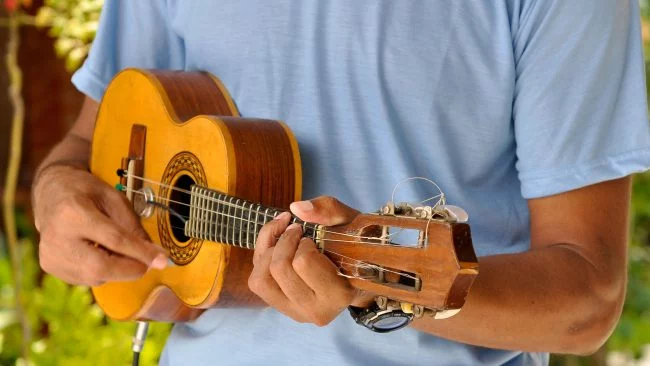Music is one of the highlights of Brazilian culture. Samba is the most popular style, although not the only one. In this article, we will talk about the main musical instruments used in the country's folklore. In addition, we show you photos and videos of them.
Below you have an index with all the points that we are going to deal with in this article.
Article Index
- 1.
- 1.1.
- 1.2.
- 1.3.
- 1.4.
- 1.5.
- 1.6.
- 2.
- 2.1.
- 2.2.
- 2.3.
- 3.
- 3.1.
Drums & Percussion
Percussion instruments are notably important in Brazilian music, as they are used to interpret different styles of samba, such as the batucada, so typical of Carnival. Here are some of the main instruments:
Cuica
La kitchen It is usually made of metal, although it can also be made of wood. It is shaped like a drum, but inside the membrane there is a bamboo stick. To play, this stick is pushed with a wet cloth, while the membrane is touched with the other hand to make different sounds.
The sound it produces is quite characteristic and there are people who even say that it sounds like a howling monkey. It is an instrument originating in Africa that was carried by the former slaves that were in the country.
Deaf
El deaf It is a large drum that can be made of wood or metal. It is the basis of the rhythm, so it is important that you play your role correctly in the samba. It is usually played with a drumstick.
Tantan
El tantan It is an idiophone percussion instrument, that is, the sound is produced by the vibration of your own body. To touch it, it is placed horizontally and the membrane and the metal part are struck. It comes from djembe, an African instrument.
Bahian timbale
The Bahian timbale is of Brazilian origin, specifically from the state of Bahia. It is a kind of cone-shaped drum that can be made of wood or metal. To wear it, it has to be fastened with a belt. The sound it produces is quite acute.
repinique
El repin It is another of the percussion instruments used in the execution of samba. It is indigenous to Brazil and can be made with wood or metal. It is played with a stick and hand, or with two sticks. Produces a sharp, dry sound.
Atabaque
El drumstick is African origin and is used to set the pace. It is built with jacaranda wood, a tree that we find in Brazil. To make it sound, the membrane is struck.
Rope
String instruments are also used in the traditional music of Brazil, like the ones we are going to see below:
birimbao
The birimbao, known in Portuguese as berimbau, is an arch formed by a flexible wooden stick, a wire, a pumpkin and a cashishi (a percussion instrument consisting of a wicker basket with seeds inside).
To play it, with one hand the string is tightened with a stone or a coin, while with the other the instrument is struck with a stick. In addition, one of the two also holds the cashishi. This instrument of African origin is used in the capoeira, a combination of dance and martial art.
Cavaquinho
El cavaquinho its an instrument chordophone (that is, it sounds when its strings are vibrated), which is shaped like a guitar, but smaller. It has four strings and the ukulele is derived from it. In Brazil it is used to interpret samba. It is believed that it began to be used in Portugal in the XNUMXth century.
rabeca
La fiddle It is an instrument similar to the violin that is used in the folk music of northeastern Brazil to interpret he covered, a musical style that is represented at parties. This instrument originated in Portugal in the XNUMXth century.
Wind
There are few aerophone or wind instruments native to Brazil, since percussion is the most prominent family of instruments, although flutes are used to accompany some styles of music.
Duck whistle
The duck whistle is typical of the states of Paraná, Santa Catarina and Río Grande del Sur. It is made of wood and is small in size. Depending on the end from which it is blown, one sound or another is produced.
In addition, to vary the sound, the hands are placed in front and movements are made with them. The duck whistle is attached to the neck with a strap.
This article has been shared 64 times. We have spent many hours collecting this information. If you liked it, share it, please:





